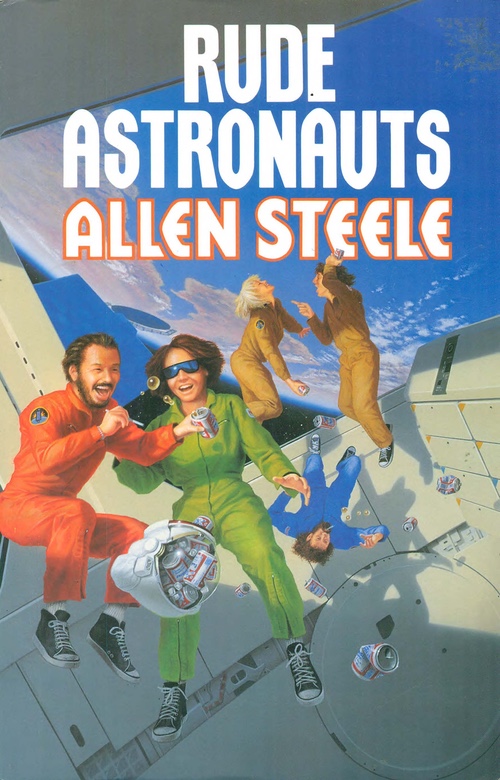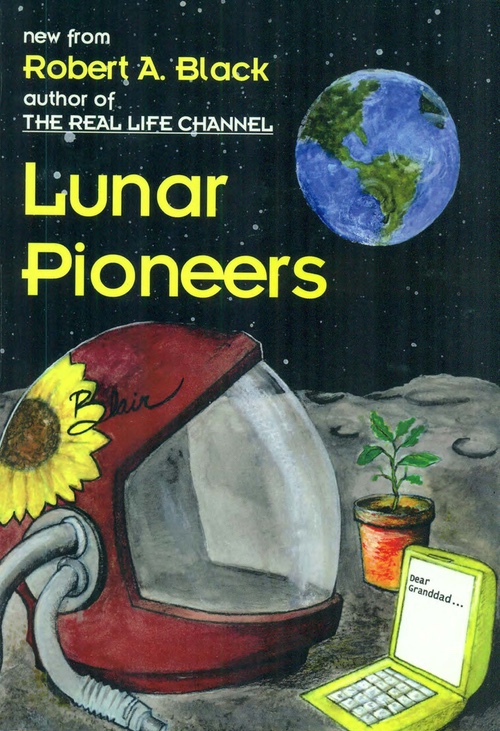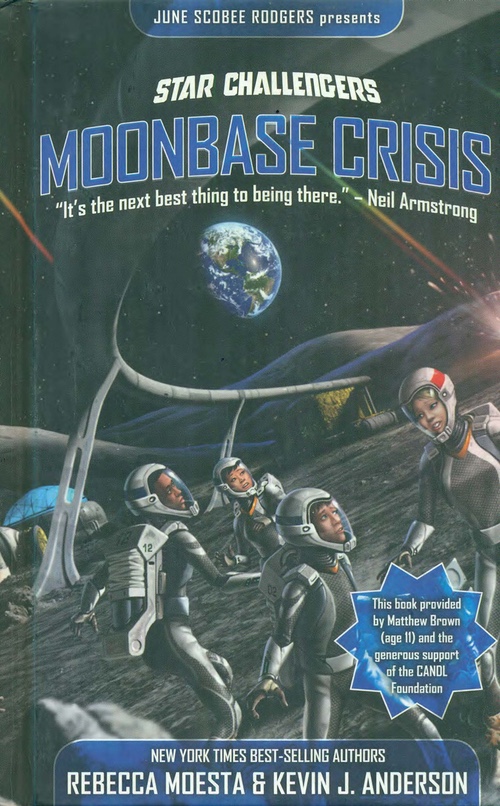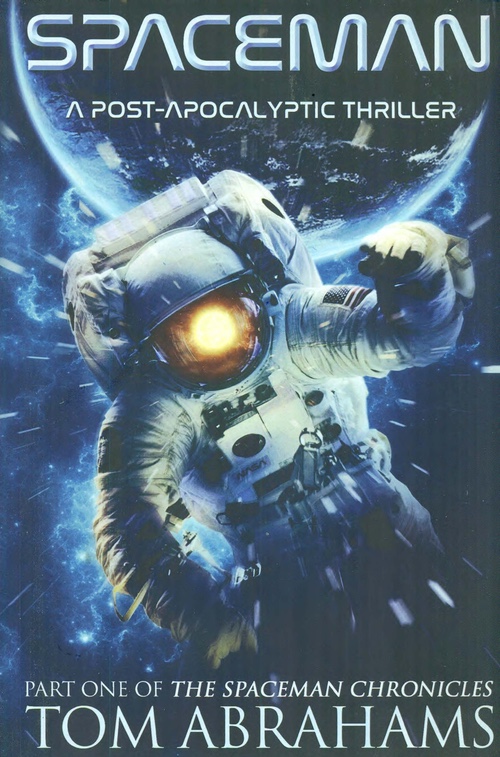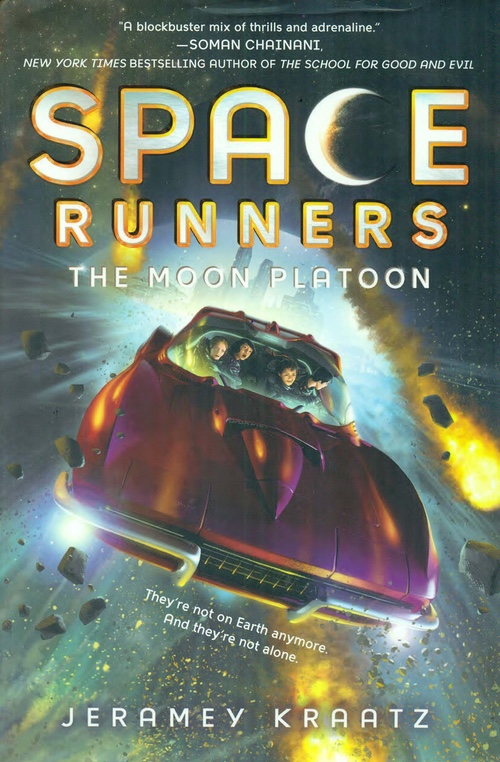Cislunar suspense 2: The Cynthianing1990sCarve the Sky, Alexander Jablokov (1991): Strange art crafted from a stable transuranian element by a long dead artist leads to a search on the Moon to uncover the secrets of this artistic mystery. But the art world is shadowy and dangerous… [GoodReads: 3.80/84] Cobra, Dan Stryker (1991): During a test of a secret X-NASP space plane, Nomad, an EMP from orbit knocks out the controls, leaving the vehicle to blindly return to Earth: the first volley in a sinister scheme to remake the axes of power in space, one that threatens even the space station. Has a bit of an inside-baseball feel to it, but was apparently a hit with the Space Command folks. [GoodReads: 3.17/6] {h/t Graham} Hawkeye, Dan Stryker (1991): During a massive military exercise in Egypt, the American Hawkeye spy satellite fails, then shortly thereafter a Russian satellite goes down. They try to fill in the gap using France’s SPOT satellite, but even that is taken out. Something sinister is going on, and only Dalton Ford can figure out what’s that is. [GoodReads: 3.75/4] {h/t Graham} Second Star, Dana Stabenow (1991): A SETI signal sparks a rush into space, and Esther “Star” Svensdotter is in charge of prepping the rushed ELLFIVE colony for the first onslaught of residents. But not everyone is on board with space colonies, and governments on Earth are losing control in the rush. Can Star keep things together long enough for things to even get started? [GoodReads: 3.46/710] A Handful of Stars, Dana Stabenow (1991): With ELLFIVE now the independent Terranova, Star decides to take a break and head out to the asteroid belt to procure the resources needed for Terranova, and to complete Space Island 2. But the asteroid belt has its own challenges and dangers. [GoodReads: 3.70/284] Rude Astronauts, Allen Steele (1992): A collection of shorts by the author from a smorgasbord of sources, many of which ended up incorporated into longer works like those previously reviewed. It’s focus remains on the blue-collar folks who will be the ones who actually build out much of our cislunar infrastructure, and their misadventures that inevitably lead to trouble with The Man. Love the cover by Keith Scaife. [GoodReads: 3.60/102] Woodsman, Thomas A. Easton (1992): In a transhumanist future, biological technology has replaced mechanical technology (mostly), and bots aren’t robots, they’re botanicals, trees engineered with human characteristics and serving as menial labor. Not all is rainbows and unicorns in the post-genetics future where genetically-engineered cockroaches serve as automobiles and elephants as fire trucks. The Engineers want machines, not genes, and begin a fundamentalist rampage to return to the old ways. This sends many fleeing to cislunar space to escape the butchery, where the space habitats struggle to accommodate the refugees. The author does get one thing right. Plants do like lunar regolith, which is rich in trace elements that have been farmed out here on Earth by agriculture. [GoodReads: 2.85/13] Harvest of Stars, Poul Anderson (1993): Brain-in-a-box Anson Guthrie is on the run from a totalitarian government, aided by his company Fireball. He escapes to the Moon, where an independent culture has grown. But totalitarianism never sleeps, and Anson soon has to head for Alpha Centauri. [GoodReads: 3.53/789] The Stars Are Also Fire, Poul Anderson (1994): While life evolves at Alpha Centauri, good ol’ Sol system has to deal with the aftermath of Fireball’s departure, the collapse of the totalitarian state, the rise of machine intelligence, and those pesky uncooperative Lunars with a secret out at the edge of the solar system. [GoodReads: 3.67/245] Harvest the Fire, Poul Anderson (1995): A poet has lost his muse in the machine-guided future, but finds it again when the Lunars decide on a heist of antimatter to fuel their ambitions. The Terramind has other plans (“to protect humanity”) and seeks to thwart the efforts. [GoodReads: 3.46/95] L5: Behind the Moon, Steve Tracy (1995): Young Amelia Mann has been left in a wheelchair by the auto accident that killed her mother. Now, after years of neglect, she’s going to L5 to be with her father, though she’s not happy to be leaving Earth and her beloved swimming. But she soon learns there’s a different kind of swimming in space, and her wheelchair is not an impediment. Which is a good thing as she has stumbled, so to speak, onto a secret that threatens not only L5, but also the Moonbase. Can Amelia solve the mystery? [GoodReads: 2.00/1] The Gatekeepers, Daniel Graham, Jr. (1995): Using a DC-X-derived spacecraft, a private company (bearing a striking resemblance to Boeing) threatens the status quo with cheap freight delivery to orbit. Established interests aren’t happy, so a midnight requisition of some SDI Brilliant Pebbles, plus the help of some friends in Australia, allows the company to take over access to LEO and protect its interests. Now everyone is annoyed, and only one man holds the key to unlocking access to orbit for the next 100 years. [GoodReads: 3.42/12] Countdown, Ben Mikaelsen (1996): Young Elliot Schroeder is chosen by a national youth lottery to voyage from his ranch to space aboard the Endeavour. When difficulties arise, he finds a connection on Earth via ham radio with a young Maasai tribesman, Vincent Ole Tome. It’s a culture clash, and when the Shuttle has to make an emergency landing in Africa, the boys will learn if they can bridge their differences. [GoodReads: 3.18/246] Firestar, Michael Flynn (1996): Mariesa van Huyten is a woman with a vision. A corporate mogul, she begins implementing a plan to create a cadre of young adults ready for the challenges that space will offer us, and to push America to achieve more in space. Organizational inertia and threatened rice bowls make the former more successful than the latter, but space has its own way of changing the status quo. [GoodReads: 3.69/559] Kacy and the Space Shuttle Secret, Sharon Kahn (1996): Young Kacy Holiday wants to do a plant project on the Space Shuttle for her Science Fair project, but she keeps getting flack from the grown-ups. She forges ahead anyway, and soon finds herself wrapped up in an adventure beyond her imagination. For very young readers. [GoodReads: 2.33/3] Virus, Bill Buchanan (1997): To protect itself, the US has established a network of directed-energy weapons deployed in LEO, overseen by a pair of stations in GEO orbit. Tests against stealth technology reveal some weaknesses, and in the scramble to update, a virulent virus is uploaded by malevolent Iraqi saboteurs, and the system goes haywire, blasting every object out of the sky. So begins a desperate struggle to save the day. [GoodReads: 3.24/62] Bright Star, Robert Louis Stevenson III (1998): Shuttle Atlantis de-orbits itself and lands in the ocean somewhere off the coast of Maine, carrying a top secret defense satellite meant to nullify the nuclear threat. A disgraced industrialist plans to auction it off to the highest bidder, and only super-divers Philip Drake and Jack Henderson can stop the malefactor. [GoodReads: 2.88/16] Rogue Star, Michael Flynn (1998): Mariesa van Huyten, driven by her preternatural fear of an asteroid impact’s effects on humanity, continues her quest to drive America into a spacefaring state. A space station is under construction, and a trip is underway to visit an asteroid, but not everyone is aligned with her interests, and some don’t want the status quo, from which they benefit, being disturbed. [GoodReads: 3.77/312] Lodestar, Michael Flynn (2000): Continuing the van Huyten saga, the fight to provide humanity with the means to mitigate asteroid hazards continues apace, with a growing cadre of young space leaders from her academies, and growing activity in cislunar space. But as always politics has to rear its ugly head, as well as corporate machinations and chicanery. [GoodReads: 3.71/222]
2000sFalling Stars, Michael Flynn (2001): In the conclusion of this epic space series, Mariesa van Huyten is proven right when it is discovered that something is out in the asteroid belt pushing rocks towards Earth, making her efforts all the more urgent. Can the nascent cislunar economy provide the means to protect Earth? [GoodReads: 3.86/207] Interlude in Death, J.D. Robb (2001): In 2059, the Interplanetary Law Enforcement and Security Conference is held at the orbiting Olympus Resort. You’d think a space station full of police would be a safe place, but then bodies start appearing and it’s up to Lt. Eve Dallas to track down the murderer. [GoodReads: 4.23/12,542] 172 Hours on the Moon, Johan Harstad (2008): Three teenagers are chosen by lottery to take a trip to the Moon, to visit an empty Moonbase built by robots. They soon realize that there’s something else there with them. Something…evil. [GoodReads: 3.64/8,442] Choose Your Own Adventure #26: Moon Quest, Anson Montgomery (2008): From the classic series comes an update to the original CYOA #167: Moon Quest. It’s 2053 and you’ve grown up in the Tycho Colony. You’ve got friends and life is good, but soon you have to make one of those potentially life altering decisions. You can play it safe with your usual tour guide job, or take a trip with the Geo Lab to the far side of the Moon. Which will you choose? Turn to page… [GoodReads: 4.20/5] Exile – and Glory, Jerry Pournelle (2008): This is actually a compilation of “High Justice” from 1974 and “Exiles to Glory” from 1977, themselves previously published in the pulps like Analog and Galaxy between 1972 and 1977, following the tale of Laurie Jo Hansen, a super-rich heiress, and Aeneas MacKenzie, a principled man who takes down a corrupt presidency. Together, they bootstrap themselves into cislunar space and then to the Moon. In the second half, a misfit finds himself on the wrong side of “The Man”, and ends up out at the asteroid belt. There, greed and corruption threaten the future of all space efforts. Reminded me a lot of Sheffield’s “Higher Education”, or even Hogan’s “Outward Bound”, but with a definite Heinleinian feel to it. I did enjoy this one. [GoodReads: 3.71/84] Lunar Pioneers, Robert A. Black (2008): Young Blair Kelly has to move to the Moon with her family, and she dreads leaving her grandparents behind. But she soon starts to fit in at Clementine Colony, meeting friends and having adventures. But there is danger also on the Moon, and she’s facing a full dose of it. [GoodReads: 4.00/2] Omega Sol, Scott Mackay (2008): A giant silver sphere appears on the Moon, and soon sets about constructing a series of strange artifacts. Humanity soon discovers to its horror that the artifacts are siphoning hydrogen from the Sun and shipping it off somewhere else, and the Sun will soon become a red giant. Is there any way humanity can save itself? [GoodReads: 3.17/36] Atlas Rising, W.C. Augustine (2010): By the late 2030s, everything in society is controlled by The Man. Access to health care? Depends on your “contribution level” to society. Employment? Controlled, something akin to the system in “When the Sleeper Awakes” by H.G. Wells. An astronomer gets an assignment, and, while not doing what he’s “supposed” to, happens to discover that an asteroid will be induced into an intercept orbit with Earth. When The Man shuts him down, the protagonist has to try to find another way to save Earth, leading to a desperate race against time. In the style of Atlas Shrugged. [GoodReads: 3.50/2] Star Challengers: Moonbase Crisis, Rebecca Moesta & Kevin J. Anderson (2010): A team of youngsters successfully finishes a Moonbase sim at their local Challenger Center, and are given the opportunity to travel to the future to a real Moonbase, which faces a crisis that threatens all of humanity. Aliens, yawn, and a bit heavy-handed STEM-wise. [GoodReads: 3.90/10]
2010sThe Moon Maze Game, Larry Niven & Steven Barnes (2011): By 2085, the Moon is well-settled (from our perspective). This makes it a great spot for some LARP-ing (Live Action Role-Playing). A special game has been set up on the Moon, attracting some interesting and well-connected players. That’s when kidnappers get involved, but LARP-ing attracts a particularly clever and resourceful type of individual… [GoodReads: 3.46/518] The Pilots of Borealis, David Nabhan (2011): Helium-3 has made the city of Borealis at the Lunar north pole phenomenally wealthy, allowing patronage of things like flying races to entertain the masses. But there’s a dark secret, one that will threaten the balance of power between Earth and Moon and lead to desperate measures. [GoodReads: 3.36/14] Apollo’s Outcasts, Allen Steele (2012): Young Jamey Barlowe was born on the Moon, but had to come to Earth, leaving him a cripple that loves swimming. A coup d’etat sends him and several other kids fleeing to the Moon for safety amongst their parents’ friends. Back in his native environment, he begins to flourish and soon joins the Rangers of the Lunar Search & Rescue. Meanwhile, back on Earth, the coup, not sated by its terrestrial gains, begins looking Moonward… [GoodReads: 3.71/190] The Cassandra Project, Jack McDevitt & Mike Resnick (2012): Jerry Culpepper is a publicist for NASA, which has been hiding a secret since before the first Moon landing, a secret that could change the world. Now, with a billionaire eyeing the Moon, that secret is threatened and there are those who will do anything to protect it. [GoodReads: 3.41/1,174] Crater, Homer Hickam (2012): Young Crater Trueblood is a young orphan on the Moon working as a miner. Unfortunately, he falls in with the mine owner’s granddaughter, Maria Medaris, and is soon tasked with a courier mission fraught with danger that will unveil a secret of the Moon. [GoodReads: 3.44/652] Dinosaur Thunder, James F. David (2012): Rips in time have linked the present with the distant past, and now dinosaur attacks are a part of modern life. There are even dinosaurs on the Moon! A strange tapestry of time-travel, pyramid-power, space, dinosaurs, and adventure! [GoodReads: 3.65/114] Moon Hoax, Paul Gillebaard (2012): In the game of geopolitics, China opens a new front by claiming that the US never landed on the Moon, and they have the proof. So begins a scramble to get back to the Moon to prove the truth. [GoodReads: 3.30/33] Chitty Chitty Bang Bang Over the Moon, Frank Cottrell Boyce (2013): The famous flying car is called upon to solve the mystery of disappearing monuments like Big Ben. A fantastical tale with time-travel, football (uhm, soccer for the Yanks), and danger. For very young readers. [GoodReads: 4.01/107] Crescent, Homer Hickam (2013): Young Crater Trueblood has his hands full. In his last adventure he captured a “Crowhopper,” a genetically-enhanced mercenary he probably really should have killed, named Crescent. Taking her to Moontown, she starts settling down, but prejudice rears its ugly head and she’s accused of murder. Crater must go on the run with Crescent to prove her innocence, a journey into the deep Lunar outback. [GoodReads: 3.74/176] Farside, Ben Bova (2013): A planet is found orbiting nearby Sirius, and the race is on to get the data on whether it could support life. In Mare Moscoviense they’re building the Angel Observatory of optical and radio telescopes, while in space the IAA is building their own interferometer. Small problems continually plague the farside project, enough so that it starts to look like sabotage. But who would sabotage a telescope? And why? [GoodReads: 3.15/1,117] Mickey Price: Journey to Oblivion, John P. Stanley (2013): Young Mickey Price is an orphan in Orlando, Florida. He’s invited with a group of other youngsters to a special space summer camp. Special in that some of them are going to the Moon. But things rarely go according to plan, and soon they’re hot-rodding across the Moonscape in a bid to get home. [GoodReads: 4.32/34] Crater Trueblood and the Lunar Rescue Company, Homer Hickam (2014): Young Crater Trueblood has proven his leadership qualities again and again, and is now an integral part of the Lunar Rescue Company. When the troublesome Maria Medaris is kidnapped, Crater’s rescue efforts uncover a threat not only to the Moon, but to Earth itself. Can Crater save the day? I have to admit I rather enjoyed this trilogy, and rank them right up there with Moonwake as top-notch lunar juveniles. [GoodReads: 3.73/91] Space Case, Stuart Gibbs (2014): Young Dashiell Gibson and his parents are some of the first settlers on the Moon at Moon Base Alpha. There are hardly any other kids, you can’t go outside to play, so life’s a bore—until a dead body shows up. Is it an accident or foul play? Dashiell leans towards the latter, but proving his case to skeptical grown-ups will be difficult. [GoodReads: 4.26/2,884] Luna: New Moon, Ian McDonald (2015): Decades after development began on the Moon, power has coalesced into five main houses who battle for power and control on the Moon. With a well-fleshed out cultural environment, this is a place where the Borgias or the de Medicis would feel right at home. The lavish parties of the idly wealthy, the struggles for position and privilege in the corridors of power, a feudalism gone wild where every breath costs money, and lots of sexy time (of all varieties). Corta Hélio is focused on the delivery of helium-3, and it has made the Corta family on the Moon fantastically wealthy. As such, they play rich-person games like sabotage, assassination, palaces in lava tubes, and dynastic weddings. Until things go wrong and it threatens to all come crashing down. [GoodReads: 3.81/2,882] Return to Earth, Dennis Calloway (2015): A rogue planetoid, designated LYC-05, or Lycos, is found to be on a collision course with Earth, leading to a mad scramble to expand facilities on the Moon and save what can be saved of humanity before everything falls apart. Then an opportunistic psychopath takes all the good stuff and heads for Europa, leaving those behind to die. A desperate plan is concocted to follow, but will first require a return to Earth for some critical supplies. What they find is hope, but also an apocalyptic nightmare-scape of horror and treachery. Will they be able to survive? [GoodReads: 4.30/23] Seveneves, Neal Stephenson (2015): Something hits the Moon, and shatters it. A desperate plan is hatched to save humanity as the pieces begin falling towards Earth. But space is hard, and eventually the human race is reduced to eight women (seven fertile) hiding in a rock out near where the Moon’s orbit was. So begins a long struggle to re-establish both the human race and Earth. Seems to kind of run out of steam towards the end, but at 850 pages that’s kind of understandable. [GoodReads: 3.98/38,192] Tracer, Rob Boffard (2015): Amassive space station in cislunar space holds the last remnants of humanity escaped from an ecologically devastated Earth. Riley Hale is a courier who runs like the wind, but soon gets caught up in larger plots and machinations that threaten everyone on the station. [GoodReads: 3.35/462] On to the Asteroid, Travis S. Taylor & Les Johnson (2016): In this sequel to Back to the Moon, a private company has robotically installed engines onto an asteroid to set it on a long, slow trajectory to near-Earth orbit to be exploited for its nickel and iron resources (and lots of other goodies like platinum group metals). On the way, its robotic drive craps out, leaving it on a direct trajectory to Earth. The Mars-bound craft being assembled in orbit is co-opted for a desperate intercept mission, but the worst corollary of Murphy’s Law (everything that can go wrong, will, and at the worst possible time) rears its ugly head, and things are not looking good for Mama Gaia. A cautionary tale that we probably should be better situated in cislunar space before we start trying to bring big rocks back. (As a side note, I’ve always been in favor of first diverting a big rock to the Sun-Earth L-4, 60 degrees ahead of the Earth in its orbit around the Sun, or SEL-5, 60 degrees behind, to show that we can control it, before then either sliding it through the SEL-2 keyhole into the Moon’s gravitational sphere of influence, or slipping it into the gravity pockets at EML-4 or EML-5.) [GoodReads: 3.85/46]
Spaced Out, Stuart Gibbs (2016): Young Dashiell Gibson is tapped once again to figure things out for the grown-ups, this time when the Moon Base Alpha Commander goes missing just as things are getting started on Moon Base Beta. It’s only the size of a soccer field: how can someone go missing in Moon Base Alpha? [GoodReads: 4.46/962] The Dark Side, Anthony O’Neill (2016): Fletcher Brass is a man who has built an empire on the edges of the law, and has created the city on the far side of the Moon where every vice is available to be fulfilled, aptly named Sin. To keep one step ahead of The Law, he’s on his way to Mars. Meanwhile, an android has escaped its lab on the far side, and begins a murderous rampage on his way to Sin. A gruesome read, but could also be read as the end-game of the current state of our society where corporate (and by extension, the individuals running them, i.e. the guys getting the fat bonuses) looting and pillaging has become somewhat the norm. In the end, is justice achieved? [GoodReads: 3.65/552] Spaceman, Tom Abrahams (2016): A massive solar eruption causes total electromagnetic disruption on Earth, leaving the ISS powerless and the citizens of Earth in a mostly pre-modern-tech state. Spaceman Clayton Shepard is the sole survivor on the ISS, and his mission is now to return to his family. [GoodReads: 4.04/193] Zero G, William Shatner & Jeff Rovin (2016): Because no one else wanted the job of providing security in cislunar space, it devolves onto the FBI to be the G-Men in zero-g. A neutrino experiment on the Moon causes massive damage on Earth, and the hardware has fallen into the wrong hands. So begins a desperate hunt for the malefactors before more damage can be wrought in the name of inducing terror. Most interesting in the novel is the speculation of where current and near-future technologies are leading us, with characters that can change gender depending on their mood, androids with enhanced capabilities, and more, with a bit of a Star Trek feel to it. [GoodReads: 3.09/78] Moon Beam, Travis S. Taylor & Jody Lynn Nye (2017): Young farm girl Barbara Winton (who fixes future tractors, among other skills) is chosen to join the “Bright Sparks,” a team of STEM-y youngsters doing projects on the Moon. While working on a radio telescope on the far side, a deadly coronal mass ejection heads for the Moon. Can the team protect themselves in time? [GoodReads: 3.20/10] Space Runners: The Moon Platoon, Jeramey Kraatz (2017): A billionaire on the Moon each year invites the best and brightest of Earth’s youth to participate in an internship on the Moon. The ultimate goal is to work on the billionaire’s hot rods, which have been adapted for use in space. This year, though, there’s a challenge no one expected, and it’s up to Benny Love and his mates to save the day. [GoodReads: 3.87/15]
ConclusionAnd there you have it, over four score titles to add to the cislunar fiction genre, bringing the total to more than 400 and with the well nowhere near to running dry. There remain newer titles, like The Moon and the Other by John Kessel, the rest of Mike Jenne’s Blue Gemini series, or Rob Boffard’s Tracer series, and obscure titles like Lee Killough’s Spider Play. Throw in the short stories (many of which did end up as books) from Analog, Asimov’s, Amazing SF, Galaxy, and other pulps over the last 80 years, and there’s no foreseeable end to adventures in near-Earth space. Sadly, even with this rich pool of material, Hollywood still seems to struggle with making good movies set in cislunar space (yes, Life, Shockwave Darkside, and Moontrap: Target Earth, I’m looking at you). There were quite a few more “juvenile” books this time around, the result of having retrieved the “Reading Space” exhibit I’d had on display for several years at a local museum. Over the last decade or so there has been a steady trickle of Moon juveniles coming out. In part this reflects the increasing focus on what has become known as STEM, as well as the belief that kids need to be “inspired” to want to have anything to do with space stuff. Some of the titles have been well done, others are clearly just adventure stories that happen to take place on the Moon, and some are just heavy-handed (yeah, I’m looking at you, Star Challengers). For a “Cislunar Summer Reading Challenge” for youngsters, I would recommend the following:
In case you’re wondering about “Cynthianing”, it is a word I made up based on the adjective “cynthian,”, which means “of or relating to the Moon.” Here’s some tsuki haiku as an example:
Cynthian deserts Folks who have done some work in orbital mechanics may remember the old terms pericynthion and apocynthion, though today you’ll more often see apolune and perilune. Linguistically, though, since peri- and apo- are both prefixes from the Greek language, “cynthion” would be the appropriate term. The word derives from the birthplace of Artemis, one of the Greek Moon goddesses, on Mount Cynthus on the island of Delos. Enjoy! Home |
|
